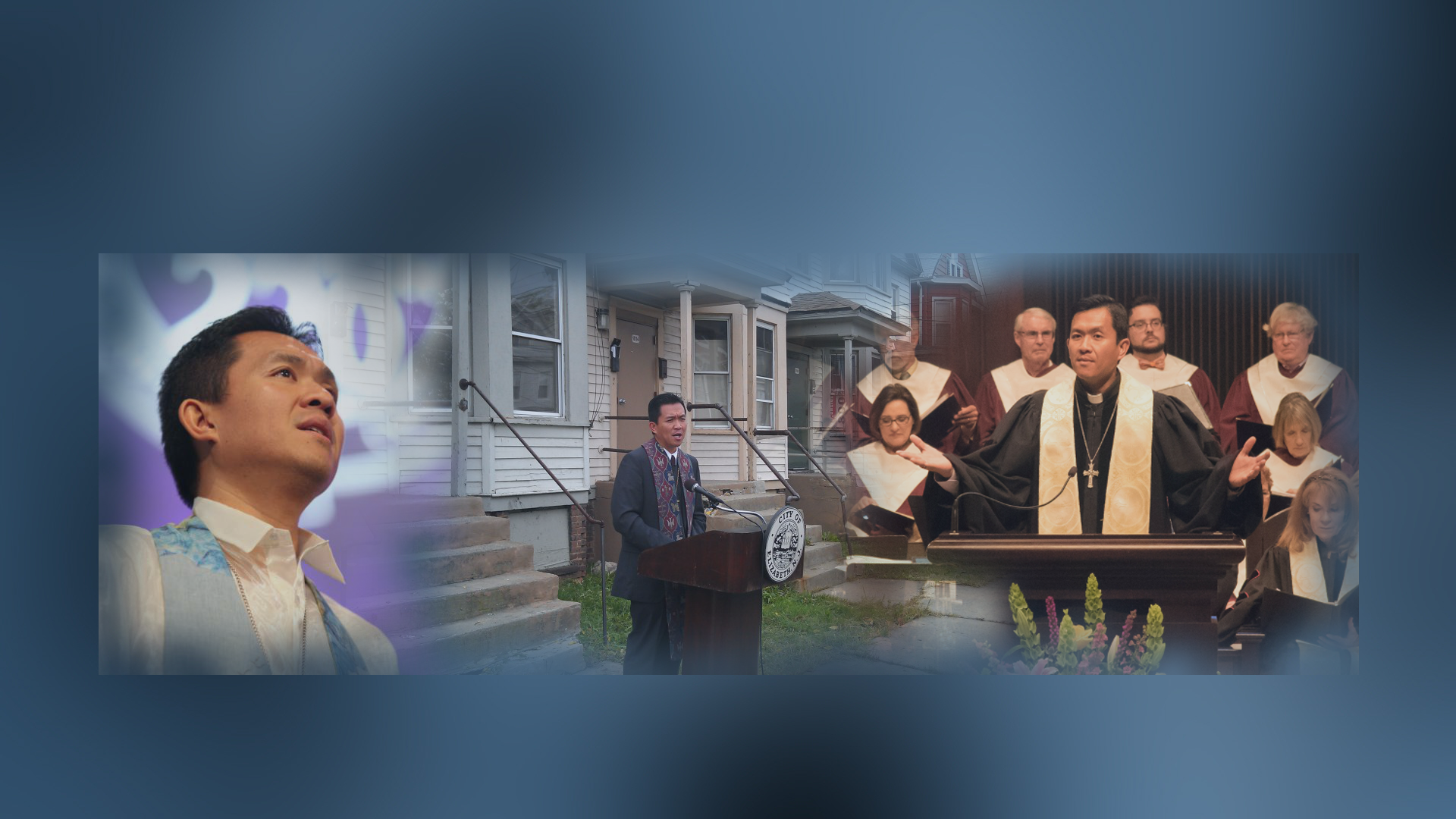40 Q. Why did Christ have to suffer death?
A. Because God’s justice and truth require it: ^1
nothing else could pay for our sins
except the death of the Son of God.^2
^1 Gen. 2:17
^2 Heb. 2:9,15; Phil. 2:8
41 Q. Why was he “buried”?
A. His burial testifies
that he really died.^1
^1 Acts 13:29; Matt. 27:60;Luke 23:50[-53]; John 19:38[-42]
42 Q. Since Christ has died for us,
why do we still have to die?
A. Our death does not pay the debt of our sins.
Rather, it puts an end to our sinning
and is our entrance into eternal life.^1
^1 John 5:24; Phil. 1:23; Rom. 7:24 [21-25]
43 Q. What further benefit do we receive
from Christ’s sacrifice and death on the cross?
A. By Christ’s power
our old selves are crucified, put to death, and buried with him,^1
so that the evil desires of the flesh
may no longer rule us,^2
but that instead we may offer ourselves
as a sacrifice of gratitude to him.^3
^1 Rom. 6:6-8, 11-12;Col. 2[:11-12]
^2 Rom. 6:12
^3 Rom. 12:1
44 Q. Why does the creed add,
“He descended to hell”?
A. To assure me during attacks of deepest dread and temptation
that Christ my Lord,
by suffering unspeakable anguish, pain, and terror of soul,
on the cross but also earlier,
has delivered me from hellish anguish and torment.^1
^1 Isa.53:10; Matt. 27:46
LORD’S DAY 16 (Q/A 40-44)
To Hell, In Hell, and Back”
The cartoon robot character, Buzz Lightyear, in the movie, The Toy Story, pretends to fly “to infinity and beyond.”
There’s no pretending when we are confronted with real pain and struggle – of the physical, emotional, mental, spiritual, congregational, organizational, communal, national – sometimes those pains and struggles seem like “to infinity and beyond.” The deep and pervasive effects of sin, violence, war, illness…even death itself, or even sojourning through the valleys of the shadows of death, have a quality to it that obscures light, life and joy.
Christian Wiman, in his recent pastoral-poetic-prophetic memoir and reflection, My Bright Abyss: Meditation of a Modern Believer, as he invites us to walk with him in and through the struggle of a living hell – a cancer that leaves him to prepare for a needed bone marrow transplant, which chemotherapy has rendered his body enervated, emaciated. His is a serious, thoughtful, no-holds barred wrestling with God, the bright abyss, where he and we are brought to the very precipice of faith, looking down and ahead and seeing nothing, wondering if there is anyone or anything ahead and below.
Wiman says this about Christianity:
I’m a Christian not because of the resurrection (I wrestle with this), and not
because I think Christianity contains more truth than other religions (I think
God reveals himself, or herself, in many forms, some not religious), and not
simply because it was the religion in which I was raised (this has been a
high barrier). I am a Christian because of that moment on the cross when
Jesus, drinking the very dregs of human bitterness, cries out, My God, my
God, why hast thou forsaken me?. . . I’m suggesting that Christ’s suffering
shatters the iron walls around human suffering, that Christ’s compassion
makes extreme human compassion—to the point of death, even—possible.
Human love can reach right into death, then, but not if it is merely human
love. (p.155, emphasis not mine)
His confession is similar to that of Simone Weil or Dietrich Bonhoeffer, or even the Old Testament prophet Habakkuk (my favorite prophet, who I characterize as Job minus the three meddling friends), who find comfort and consolation in the God who knows us, who desires and who, in fact, to be in our life, to be in our places, to be in our hellish moments.
Q/A 40 through 44 are powerful assertions of what God does with our Good Fridays. God as Jesus Christ in the Holy Spirit doesn’t run away from our sin, doesn’t discard us, doesn’t flee from us, but comes toward us and becomes as one of us. Jesus Christ comes as one of us, and to have his existence with us as full and authentic, Jesus experiences our hell, becomes one with us in the hell of this world, feeling it, carrying it in his heart and soul, receiving the effects of it…and the ultimate consequence of it: death itself. The Son of God going to the depth and darkness of death itself, the Creed and the ancient ecumenical Church saw this as so critical to assert that Christ really, truly, fully died. “He descended into hell” re-iterates His death. He experienced death, the pain that accompanied it, and the anguish that embraced His heart and His soul.
Recall that this Catechism began in Q/A 1 to reassure us as followers of Jesus Christ that our comfort in life and in death, in body and in soul, is that we belong to our faithful Savior and Lord. Q/A 40 through 44 drives home that point. In every single moment, in our waking and in our sleeping, in our living days and in our mini-deaths, and even when death knocks on the doorsteps of our homes, we are not alone. In the deepest and darkest despair of the hellish moments and torments of our individual and corporate lives, the Lord and Savior, Jesus Christ, is not an abstraction; He is not a theory, an idea, a philosophy, or a stand-offish Sovereign. Here we have hanging on Calvary’s cross is the Son of God – God in flesh and blood – who takes on hell, who lives in our hell, who knows it inside and out – but who in the end is not consumed by it, not vanquished by it, but who, as Fleming Rutledge says, looked at the “fangs of death” and rendered it powerless. And because of Him, we are not left alone, and we are finally rescued from it all.
